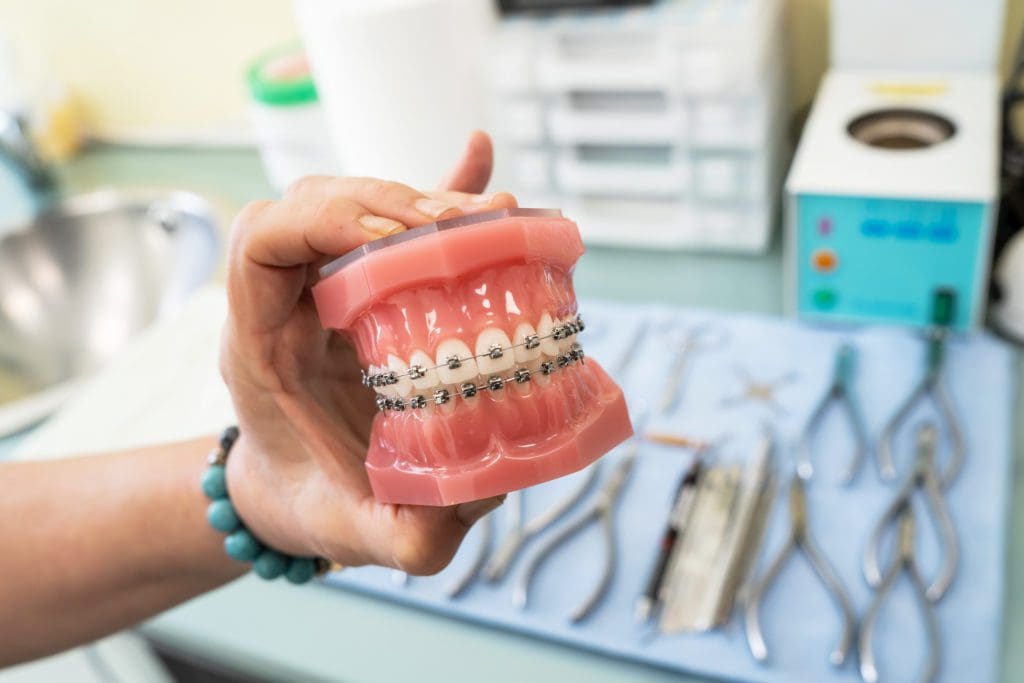Finding the Right Cumming Orthodontist for Your Braces and Aligners Demands
Finding the Right Cumming Orthodontist for Your Braces and Aligners Demands
Blog Article
Comprehensive Overview to Orthodontics Treatments for Fixing Dental Imbalances
Understanding the details of each procedure, including their systems, benefits, and possible downsides, is important in making informed choices concerning one's orthodontic treatment. As we navigate with the extensive guide to orthodontic procedures for correcting oral misalignments, the elaborate details of each method will certainly unravel, losing light on the path toward a practical and unified oral alignment.
Orthodontic Procedures Overview

In enhancement to clear aligners and traditional dental braces, orthodontists may additionally advise various other treatments like headgear, palatal expanders, or retainers to deal with certain alignment problems (invisalign). These treatments are tailored to every patient's unique demands and may involve a combination of therapies to attain the preferred outcomes. Routine modifications and surveillance are vital parts of orthodontic therapy to make certain development is on track and to make any kind of essential adjustments in the process. By going through orthodontic treatments, people can not just accomplish a straighter grin however likewise improve their total dental health and wellness and function.
Conventional Dental Braces: How They Work
When considering orthodontic therapies for dental imbalances, traditional braces stand out as a reliable approach for remedying teeth positioning. Standard dental braces are composed of braces, cords, and bands that collaborate to apply continual pressure on the teeth, slowly relocating them right into the desired placement. The braces are connected to the teeth using an unique adhesive, and the cords are threaded via the brackets. By readjusting the stress of the cables, orthodontists can manage the instructions and pressure put on each tooth, guiding them into appropriate placement gradually.
One secret aspect of just how typical braces work is the procedure of bone improvement. As stress is put on the teeth through the dental braces, the bone surrounding the teeth is improved to support the new tooth settings. This improvement is vital for the long-term stability of the remedied positioning. Patients will need routine adjustments at the orthodontist's workplace to make certain the braces proceed to apply the proper stress for reliable teeth motion.
Invisible Aligners: Cons and pros
Undetectable aligners supply a discreet and practical choice to conventional braces for remedying oral imbalances. These clear, custom-made trays are essentially undetectable when used, making them an enticing alternative for people looking for an extra cosmetically pleasing orthodontic therapy. Among the primary benefits of undetectable aligners is their removability, allowing for much easier maintenance of oral health contrasted to standard dental braces. Individuals can get rid of the aligners prior to eating or brushing their teeth, decreasing the threat of food obtaining stuck in the device and simplifying the dental bridge cleansing procedure.

Surgical Orthodontic Options
Surgical treatments in orthodontics present sensible options for resolving intricate dental imbalances that may not be successfully resolved via conventional orthodontic therapies. While traditional braces and unnoticeable aligners can deal with many orthodontic issues, particular cases require surgical intervention to achieve optimal outcomes. Surgical orthodontic choices are usually advised for severe malocclusions, considerable jaw inconsistencies, and instances where the underlying bone structure needs adjustment to accomplish appropriate alignment.
One usual medical orthodontic procedure is orthognathic surgical treatment, which entails rearranging the jaws to remedy useful issues such as difficulty chewing or speaking. This surgical procedure is commonly performed in partnership with an orthodontist who assists straighten the teeth prior to and after the procedure. Surgical orthodontics might likewise entail procedures to expose impacted teeth, remove excess gum cells, or improve the jawbone to produce a much more harmonious face profile.
Prior to considering medical orthodontic options, patients go through a thorough analysis to figure out the requirement and prospective advantages of such interventions. cumming braces. While surgical treatment may seem complicated, it can dramatically enhance both the function and looks of the smile in situations where conventional orthodontic treatments drop short
Retainers and Post-Treatment Treatment

Post-treatment care includes complying with the orthodontist's instructions diligently. This might include correct dental health methods, going to follow-up appointments, and using the retainers as prescribed. Failing to follow post-treatment treatment instructions can lead to regression, where the teeth gradually relocate back in the direction of their initial positions. Consistent retainer wear, good dental hygiene, and routine oral check-ups are essential for maintaining the results achieved via orthodontic surgical procedure and ensuring the long-lasting stability of the remedied oral alignment.
Verdict
To conclude, orthodontic procedures use numerous options for dealing with oral misalignments. Standard braces make use of metal brackets and cords to change teeth into proper alignment. Unnoticeable aligners offer a more very discreet choice but might not be suitable for all situations. Surgical orthodontic alternatives are available for a lot more severe misalignments. Retainers are frequently made use of post-treatment to maintain the new placement. Overall, orthodontic procedures can successfully boost oral health and aesthetic appearance.
As we browse through the extensive overview to orthodontic treatments for remedying dental misalignments, the elaborate information of each technique will certainly unravel, dropping light on the path toward a functional and unified dental positioning. - orthodontist
One of the most common orthodontic treatments is the use of dental braces, which are composed of steel brackets and cables that apply gentle stress to slowly move teeth into the wanted placement.When taking into consideration orthodontic therapies for dental imbalances, typical braces stand out as a time-tested approach for remedying teeth positioning. Additionally, invisible aligners might not be appropriate for complicated orthodontic issues that call for more substantial teeth motion, as they are usually advised for moderate to moderate cases. Retainers are custom-made orthodontic gadgets developed to hold teeth in their fixed placements after the completion of orthodontic therapy.
Report this page